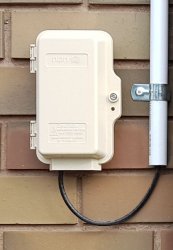- Joined
- Oct 13, 2013
- Posts
- 17,131
Yes that’s ok but Netflix plus apps at most downloads at around 5-10MbpsWell I may have updated all my apps. And downloaded a heap of Netflix programs for my travel without inflight entertainment.
Yes that’s ok but Netflix plus apps at most downloads at around 5-10MbpsWell I may have updated all my apps. And downloaded a heap of Netflix programs for my travel without inflight entertainment.
Four 40 minute episodes took about 15-20 seconds, if that. So at least an order of magnitude better than 5-10 Mbps. It surprised the heck out of me.Yes that’s ok but Netflix plus apps at most downloads at around 5-10Mbps
God Luck for tomorrow. Which ISP did you choose and what cost if you don't mind me asking.
I have yet to bite the bullet. Our cutoff date for ADSL was within 6 weeks from March 8, but still going ok although it stopped for a few days and then revived.

I think I'll wait till after the election and talk to my local member who'll hopefully be in government, not opposition.
We will only get FTTN and I dont even know where the node is. I assume that the existing copper wire will be our connection point. Does everone get a box like yours or is that FTTP?
You should already have a box like that if your cabling is underground, it's the lead in from the street. I have FTTC (copper lead-in) and my existing lead-in installed by Telstra ~15 years ago looks like that, but with a Telstra logo of course. If you have overhead wires then you might not, it might tether to the roof. For FTTN they won't be changing anything around your property.
Optus sent an email on Tuesday saying we were going to be cut off soon and 6 hours later that was it.
I must check that this terminates our contract with them and decide on a NBN provider.
Overe past 40 years all our phone lines have been underground from a Telstra pit in the street all the way into our building: this has provided security for our telephone lines, fax lines, alarm connection back to base and internet.
Even if you have the latest internet alarm monitoring, you'll lose it in a snip.
That's interesting, I actually haven't discussed the activation procedure with anyone who is on FTTN before, it sounds like a very poor experience.
I can describe how it is done for FTTP and FTTC:
For FTTP, the fibre is run through the lead-in in parallel with the copper. The points are installed inside your premises and equipment installed within (the NTD). The copper continues to work until the decommission date on the NBN website, before which time you are obliged to have moved yourself, either with your current RSP or a new RSP.
For FTTC, there's a relay attached to the DPU (the curbside box) which senses whether or not the new NBN NCD is connected and is powering the curbside box. If not, your ADSL continues to work until the copper decommission date, when they snip the old copper pairs and you can only use the NBN NCD. Until then, no power means old ADSL is active, power means new FTTC is active. You make arrangements with your RSP and they send out a box with your NCD that you connect.
Now FTTN is interesting. There's no reverse power because they power it at the node, and there's no option to run them in parallel. They need to snip the pairs back to the exchange and reroute them to the node, where the new VDSL signal will originate. I guess, if your modem supports VDSL you'll probably be able to keep working without any interruption, assuming your current RSP migrates you across/enables your service.
Can you check something: Log on to the below website and put your address in, and then let us know the Service Class number that appears. That will describe how ready your premises is for NBN. From that it might be possible to work out where your house is in terms of connectivity.
AFF Supporters can remove this and all advertisements
It all seems to be a bit of an (un) lucky dip with the only thing one can be certain of it that it will cost more
... well, there are winners and losers. Happy for you.Definitely not the case for me - I pay less for my nbn than I did for ADSL2+ and like 10 times the speed
They call it Node Lotto. Your speed depends on how far your premises is from not only the Node but the Node to Pillar to You because that is the entire copper length. And sometimes a Node can be right outside a premises but the house is actually connected to another node further away, or the pillar is further from the house than the Node is. The closest Node may not be your Node.It all seems to be a bit of an (un) lucky dip with the only thing one can be certain of it that it will cost more.
Telstra and Optus try to lock people in with contracts and bundles of stuff they don't really need - the best thing about the nbn is how it offers so much more choice of providers.

